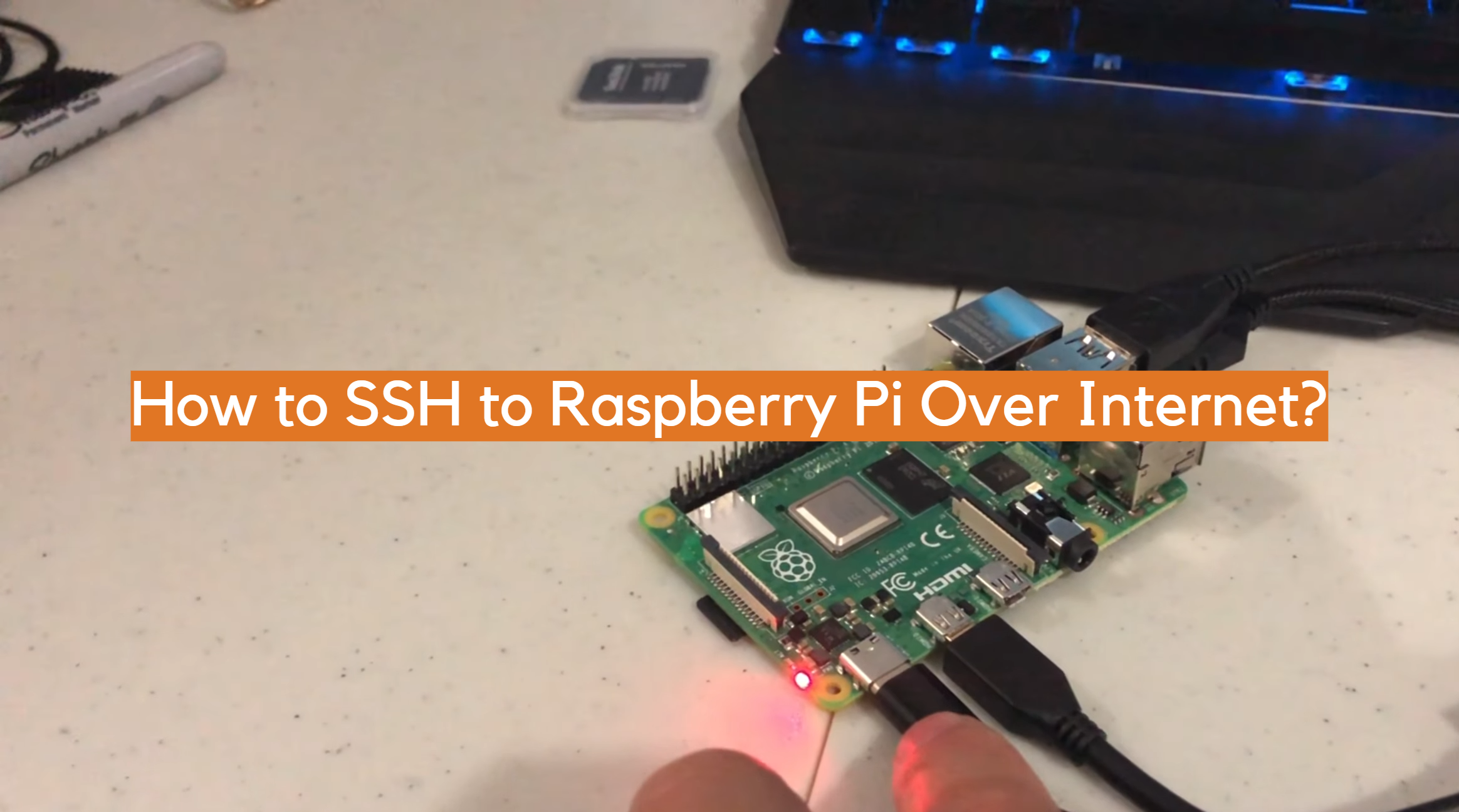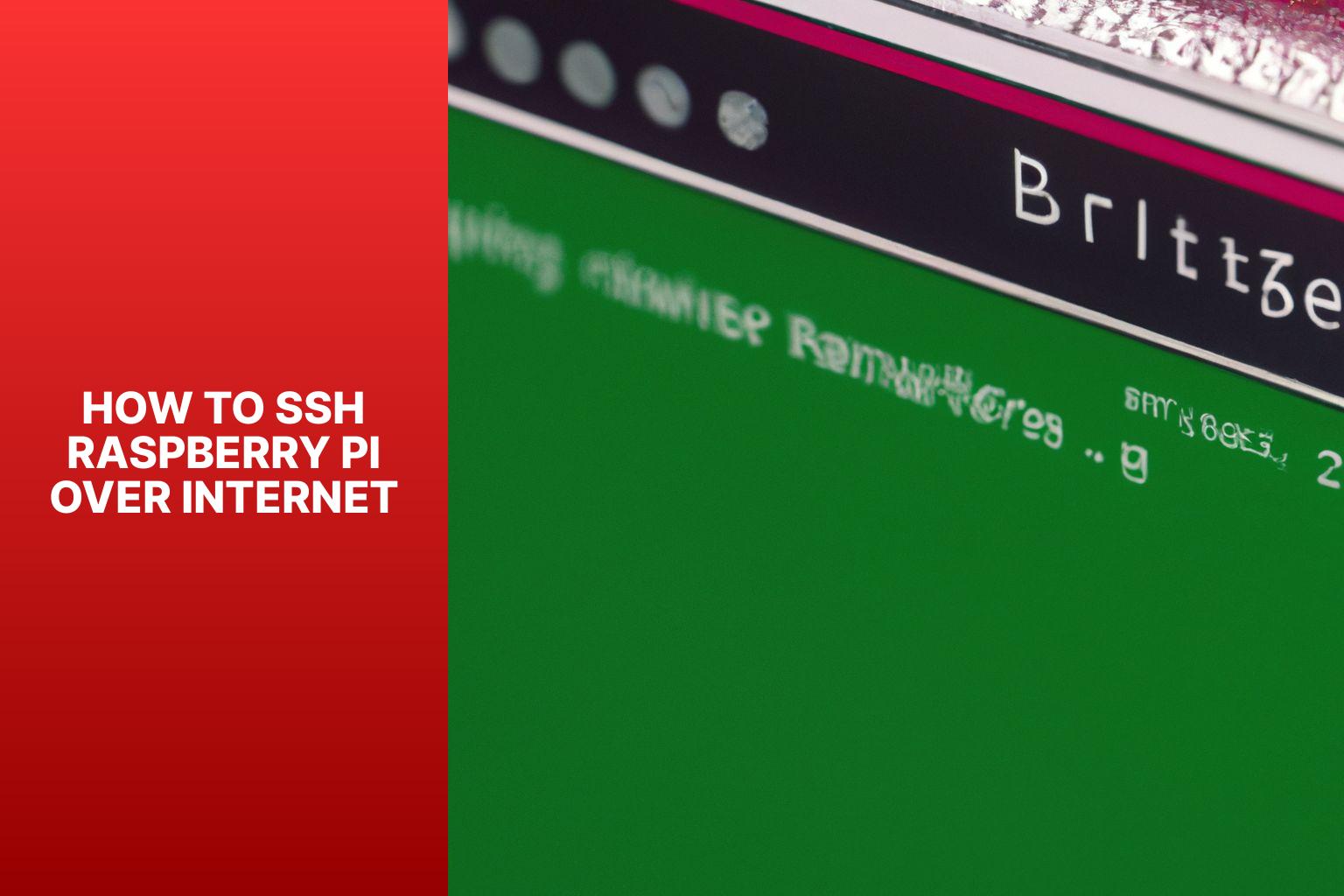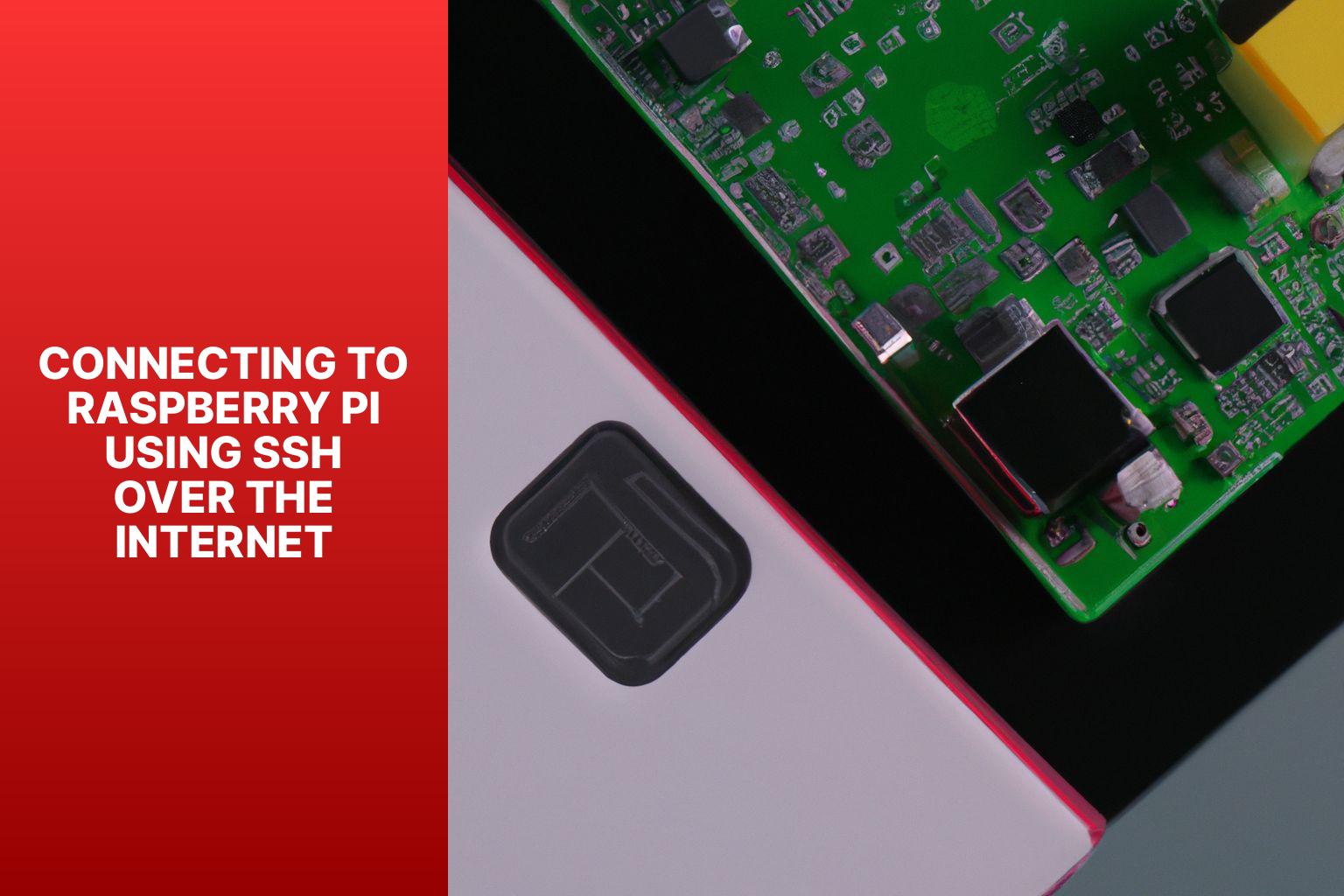Remote Raspberry Pi Access: SSH, VNC & Secure Options [Guide]
Ever wished you could command your Raspberry Pi from anywhere in the world? Remote access is no longer a futuristic fantasy; it's a tangible reality, offering unprecedented control and flexibility. But with great power comes great responsibility, especially when venturing beyond the safety of your local network.
The allure of accessing your Raspberry Pi projects from any corner of the globe is undeniable. Imagine tweaking your home automation system while on vacation or monitoring your remote sensors from the comfort of your office. One of the most common and reliable methods for achieving this is through Secure Shell, more commonly known as SSH. This network protocol provides a secure tunnel for communicating with your Raspberry Pi, allowing you to manage and control it remotely. I generally log into my raspberry pi via ssh, or secure shell to give it its full name. This allows command line access, to your raspberry pi, from another computer.
| Category | Information |
|---|---|
| Name | Raspberry Pi (General Information) |
| Type | Single-board computer |
| Developer | Raspberry Pi Foundation |
| Primary Use | Education, DIY Projects, IoT Devices |
| Operating Systems | Raspberry Pi OS (formerly Raspbian), Ubuntu, Windows IoT Core |
| Connectivity | Ethernet, Wi-Fi (on some models), Bluetooth (on some models) |
| Remote Access Methods | SSH, VNC, Raspberry Pi Connect, External Services (RealVNC) |
| Security Considerations | Port Forwarding Risks, Password Security, Firewall Configuration |
| Official Website | raspberrypi.org |
However, while SSH offers remarkable convenience, it's crucial to understand the security implications of exposing your Raspberry Pi to the internet. The very act of connecting remotely introduces potential vulnerabilities that malicious actors could exploit. The problem is that connecting to your pi over the internet often involves exposing a port on your router to the world wide web which is potentially a massive security risk. Before diving into the technicalities, let's address the elephant in the room: security. Here are some tips to help keep your pi secure when accessed over the internet:
One immediate concern is the exposure of your router. Connecting to your Pi over the internet often means opening up a port on your router, effectively creating a direct line of communication between your device and the outside world. This is where port forwarding comes in, a technique often described as SSH tunneling. If you google around for remote access solutions, youll undoubtedly come across port forwarding (also known as ssh tunneling). While seemingly straightforward, this approach presents a significant security risk if not implemented correctly. For example forward all external port number 9022 to 22 on the raspberry pi ip address/hostname. In this case, you should connect to your raspberry pi over the internet by x.x.x.x:9022 because the router/switch/firewall will forward to 22.
Think of your router as the gatekeeper of your home network. By default, it blocks unsolicited traffic from the internet, protecting your devices from potential threats. Port forwarding essentially tells the router to open a specific port and direct traffic arriving on that port to a particular device within your network, in this case, your Raspberry Pi. While this allows you to connect remotely, it also creates a potential entry point for attackers. In addition, it's so easy to find which opened port number of your raspberry pi has been used for ssh.
Fortunately, there are several ways to mitigate these risks. One of the most effective is to use a Virtual Private Network (VPN). By creating a secure, encrypted connection between your device and your home network, a VPN shields your traffic from prying eyes and prevents unauthorized access. Expose ssh or vnc on your raspberry pi over the open internet, within a vpn, or using an external service like realvncs cloud vnc viewer. Another option is to utilize external services like RealVNC's Cloud VNC Viewer, which provide a secure and user-friendly way to access your Raspberry Pi remotely without the need for port forwarding.
- Movierulz State Vs Nobody 2025 Review Is It Worth Watching
- Glaad Voice Your Source For News Lgbtq Advocacy Updates
Raspberry Pi Connect, a free screen-sharing and remote shell service provided by Raspberry Pi, offers yet another alternative. Use raspberry pi connect, a free screen sharing and remote shell service provided by raspberry pi. This service simplifies the process of remote access, eliminating the need for complex configurations and enhancing security. Access your raspberry pi projects from anywhere.
Let's delve into the specifics of SSH. SSH, or Secure Shell, enables remote access to your Raspberry Pi. Ssh enables remote access to raspberry pi: Ssh allows you to remotely connect to your raspberry pi over the internet, providing a convenient way to control and manage your device. It's a network protocol that provides a secure and encrypted connection between your computer and your Raspberry Pi. This allows you to execute commands, transfer files, and manage your Pi as if you were sitting right in front of it. While remote accessing your pi is very convenient, it also comes with security risks.
Although it is possible to ssh into the raspberry pi from anywhere in the world, and I do, this post only covers ssh access over the local network. Before attempting remote access over the internet, it's crucial to ensure that SSH is properly configured and working within your local network. This involves enabling SSH on your Raspberry Pi and configuring your firewall to allow SSH traffic. Here are the main ways to enable ssh on raspberry pi:
On Raspberry Pi OS Desktop:
Enable SSH in the Raspberry Pi Configuration tool under the Interfaces tab. Scroll down to select 7. The raspberry pi configuration tool will be updated.
On Raspberry Pi OS Lite:
Apply advanced options when flashing the SD card.
Once SSH is enabled, you can connect to your Raspberry Pi from another computer on the same network using an SSH client. This typically involves opening a terminal or command prompt and typing a command like "ssh pi@raspberrypi.local," replacing "pi" with your Raspberry Pi's username and "raspberrypi.local" with its hostname or IP address. For example, if you are logged into your raspberry pi locally, type this command:
Once you've established a connection, you can begin exploring the possibilities of remote access. You can update and upgrade your Raspberry Pi remotely. Well need to update and upgrade raspberry pi remotely using the ssh client. Login to your raspberry pi using the ssh client as described above. Well need to update and upgrade raspberry pi remotely using the ssh client.
Beyond basic command-line access, SSH also enables you to share files to, and from, a Raspberry Pi using SCP (Secure Copy) on the command line, or SFTP (SSH File Transfer Protocol). This allows you to easily transfer data between your computer and your Raspberry Pi, making it ideal for managing projects, deploying applications, and backing up important files.
For those seeking an alternative to port forwarding, custom tunnels offer a compelling solution. Once ssh is enabled, you need to create a custom tunnel so that it can be accessed through pitunnel.com. A custom tunnel allows you to access your raspberry pi ssh through pitunnel.com with an address like pitunnel.com:12345. Custom tunnels are created by entering a command in your raspberry pi terminal:
These tunnels create a secure connection between your Raspberry Pi and a remote server, allowing you to access your Pi through a unique address without exposing your router to the internet. Pitunnel.com is one such service that provides custom tunnels for Raspberry Pi users.
Connecting to your raspberry pi using ssh over the internet at this point you are able to connect to your raspberry pi over the internet or in LAN the same way. For example you can ping your pi (remember to use ping6 instead of ping because husarnet creates a virtual lan network based on ipv6):
Now that you have successfully connected to your raspberry pi over ssh, you can use any standard terminal emulator application to connect to your raspberry pi over the internet. In our case, we are using the mobaxterm as. Use ssh on a raspberry pi with pc, windows and linux
SocketXP is a cloud-based IoT remote access and device management solution that provides SSH access to remotely located IoT devices such as a Raspberry Pi, Arduino, Nvidia Jetson, or any embedded Linux devices behind NAT router or firewall over the internet using secure SSL/TLS VPN tunnels. Socketxp is a cloud based iot remote access and device management solution that provides ssh access to remotely located iot devices such as a raspberry pi, arduino, nvidia jetson, or any embedded linux devices behind nat router or firewall over the internet using secure ssl/tls vpn tunnels.
Remote access opens up a world of possibilities for your Raspberry Pi projects, allowing you to control and manage your device from anywhere. Whether you choose SSH, VNC, a VPN, or an external service like RealVNC, it's crucial to prioritize security and take the necessary steps to protect your Raspberry Pi from potential threats. One common method to remotely access a raspberry pi iot is using secure shell (ssh), a network protocol that provides a secure way to communicate with a remote device.
Remember, a little caution goes a long way in ensuring the safety and security of your Raspberry Pi and your network. I am extremely stuck with being able to connect to my raspberry pi over the internet i have setup a git repository on my raspberry pi and within my local network i can use ssh to remotely connect to the pi and the git repo. I have also added public key pairs for each user, removing the use of passwords and forcing public key use.
Fri Jan 12, 2018 11:03 AM. Hello, I am completely new to Raspberry Pi and to electronics in general honestly. I will be using the Pi out in a remote field with no internet access, and want to SSH into it from 500ft away using my laptop and a 500ft ethernet cable. I was told I need to set up an access point.
After installing Fail2ban no SSH over internet. After installing Fail2ban no SSH over internet.
- Decoding The 1851 George Stokes Equation Keyword Explained
- Vegamoviespet Is It A Scam Find Safe Streaming Alternatives

How to SSH to Raspberry Pi Over Internet? ElectronicsHacks

SSH Raspberry Pi Over Internet A Step by Step Guide

SSH Raspberry Pi Over Internet A Step by Step Guide